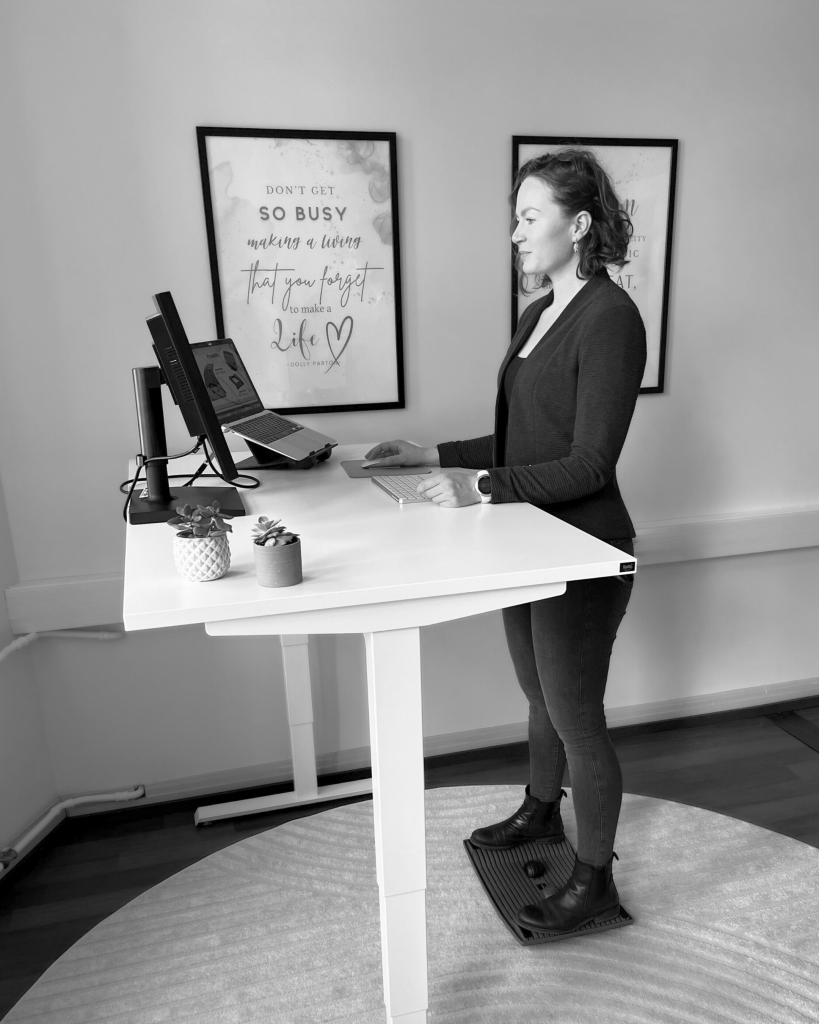In our modern, desk-bound work culture, we often underestimate how profoundly movement influences our mental state. The human body evolved for movement, yet many of us spend 8+ hours daily in static positions, focused on screens and keyboards. This sedentary pattern doesn’t just affect our physical health; it significantly impacts our mental wellbeing too. By introducing regular movement throughout your workday, you can transform your mood, boost cognitive function, and create a more sustainable approach to workplace wellness. Let’s explore how simple, intentional movement can become your most accessible mental health tool, no matter how busy your schedule.
The science behind movement and mental well-being
When you move your body, you trigger a cascade of beneficial biochemical reactions. Physical activity stimulates the production of endorphins, often called your body’s natural mood elevators. These powerful chemicals reduce pain perception and create feelings of positivity and energy. Similarly, movement boosts serotonin and dopamine, neurotransmitters that regulate mood, pleasure, and satisfaction.
Beyond these immediate chemical effects, regular movement throughout the day helps regulate your stress response. Physical activity reduces levels of cortisol, your primary stress hormone, which when chronically elevated can contribute to anxiety and depression. Even brief periods of movement can provide this stress-buffering effect.
Perhaps most fascinating is how movement directly impacts brain structure and function. Research shows that physical activity increases blood flow to the brain, delivering oxygen and nutrients essential for optimal cognitive performance. It also stimulates the production of BDNF (Brain-Derived Neurotrophic Factor), a protein that supports the growth of new neural connections, improving learning, memory, and overall brain health.
How does workplace immobility affect your mind?
Prolonged sitting and physical inactivity in office environments create a perfect storm for mental health challenges. When you remain static for hours, blood flow decreases throughout your body, including to your brain. This reduced circulation can manifest as mental fatigue, difficulty concentrating, and foggy thinking, all of which undermine your productivity and job satisfaction.
The physical discomfort that builds from static postures, such as neck tension or back pain, creates additional mental burden. Your brain must allocate resources to process this discomfort, leaving fewer cognitive resources available for your actual work tasks.
Workplace immobility also disrupts your natural energy regulation. Without movement breaks, your energy typically crashes mid-morning and mid-afternoon, leading to increased reliance on caffeine and sugar, creating unhealthy cycles of artificial stimulation and energy depletion.
Over time, these daily patterns can contribute to more serious mental health concerns. Research has linked excessive sitting with higher rates of anxiety and depression, showing that our sedentary work culture may be silently undermining our psychological wellbeing.
Simple movement techniques for busy workdays
Incorporating movement doesn’t require dramatic workplace overhauls or time-consuming exercise routines. Try these practical strategies that seamlessly blend into your workday:
- Micro-movement breaks: Set a timer to stand and stretch for just 1-2 minutes every 30 minutes. Even these brief interruptions can reset your mental state and improve focus.
- Desktop stretches: Simple neck rolls, shoulder stretches, and seated twists can be performed without leaving your workspace.
- Walking meetings: Convert phone calls or one-on-one discussions into walking conversations, combining productivity with movement.
- Active workstations: Consider using a standing desk for improved workplace ergonomics with an ergonomic standing board for active movement that encourages subtle, continuous movement while you work.
- Stair breaks: Skip the lift and take the stairs when moving between floors, turning necessary transitions into movement opportunities.
- Water trips: Keep your water bottle slightly out of reach so you must stand to hydrate, creating natural movement prompts throughout the day.
The goal isn’t to disrupt your workflow but to integrate movement so naturally that it becomes an unconscious part of your work routine, supporting both productivity and mental health simultaneously.
Movement timing strategies for optimal benefits
When you move is almost as important as how you move. Strategic timing maximizes the mental health benefits of workplace movement:
- Morning movement ritual: Begin your day with 5-10 minutes of gentle stretching or brisk walking before sitting down at your desk. This morning movement primes your body and mind for the day ahead, establishing a positive tone.
- Mid-morning reset: Around 10:30-11:00 am, when your initial focus typically begins to wane, incorporate a 3-5 minute movement break to refresh your mental clarity.
- Post-lunch activation: Combat the afternoon slump with movement immediately after lunch. Even a 10-minute walk can significantly improve your digestion and prevent the post-meal energy crash.
- Transition movements: Use physical activity as a boundary between different types of work tasks. For example, after completing a challenging project, take a quick walking break before beginning the next task.
- End-of-day release: Before leaving work, perform a few minutes of stretching or movement to help your mind transition from work mode to personal time, improving your ability to mentally disconnect.
By synchronizing movement with your body’s natural energy rhythms, you can maintain more consistent mental performance throughout the day.
Building sustainable movement habits at work
Creating lasting change requires more than just knowing what to do; it requires building systems that make movement the path of least resistance:
Start with tiny habits that feel almost too easy to fail. For example, commit to standing up once every hour rather than attempting a complete overhaul of your work routine. These small wins build momentum and confidence.
Use environmental cues to trigger movement. Position items you frequently need slightly out of reach, or place visual reminders about movement where you’ll regularly see them. Your physical workspace can either enable or hinder your movement habits.
Leverage social accountability by finding movement partners among your colleagues. Walking meetings, stretch breaks, or friendly step challenges can create positive social pressure that reinforces your commitment to movement.
Track your progress with simple metrics that provide immediate feedback. This might be as basic as ticking a box when you complete a movement break.
Remember that consistency matters more than intensity. Regular, gentle movement throughout each day provides greater mental health benefits than occasional intense exercise followed by prolonged sitting.
At Gymba, we believe that integrating natural movement into your workday is one of the most powerful ways to support your mental wellbeing. Our ergonomic solutions are designed to make movement intuitive and accessible, helping you maintain both physical and mental health without disrupting your productivity. By implementing these strategies and creating an environment that encourages regular movement, you’re investing not just in your current mental state, but in your long-term cognitive health and workplace satisfaction.

